Healthy People in a Healthy Antelope Valley
In 2022, the California Community Foundation (CCF) launched the Regional Recovery Hub to strengthen place-based coordination in Los Angeles County regions that were most heavily impacted by COVID-19. CCF contracted with six regional leads to build recovery action plans and distribute financial resources in their regions. Regional leads convened a table of local organizations to guide and implement the work in each region.
NDSC provided data and technical assistance support to each of the regions and their network of local community partners. This data story is part of a series on CCF’s Regional Recovery Hub and provides insights into the work being led by Antelope Valley Partners for Health in the Antelope Valley. To explore additional data for this region, view it on the NDSC map here.
The Western Mojave
Antelope Valley is a high desert located in northern Los Angeles County with parts permeating Southern Kern County. The region includes the cities of Lancaster, Palmdale, Rosamond, and Mojave, as well as a number of unincorporated areas. This story is focused on the part of the region within Los Angeles County with a total population of 402,000 residents, shown on the map below. Hover over a neighborhood on the map to view various demographic characteristics about the area.
Nestled in the Mojave Desert, the valley is known for its natural beauty and flora. Each year the valley draws over 50,000 people from across the State of California for its annual poppy festival. Residing in a more rural area of Los Angeles County presents both opportunities and challenges for residents’ health, educational opportunities, and resource accessibility. Antelope Valley Partners for Health (AVPH) is a community-based organization seeking to bridge the gap that often exists in service delivery and resource availability for residents in rural areas. AVPH serves the most vulnerable populations in the valley and improves residents’ quality of life by increasing access and knowledge across a number of areas.

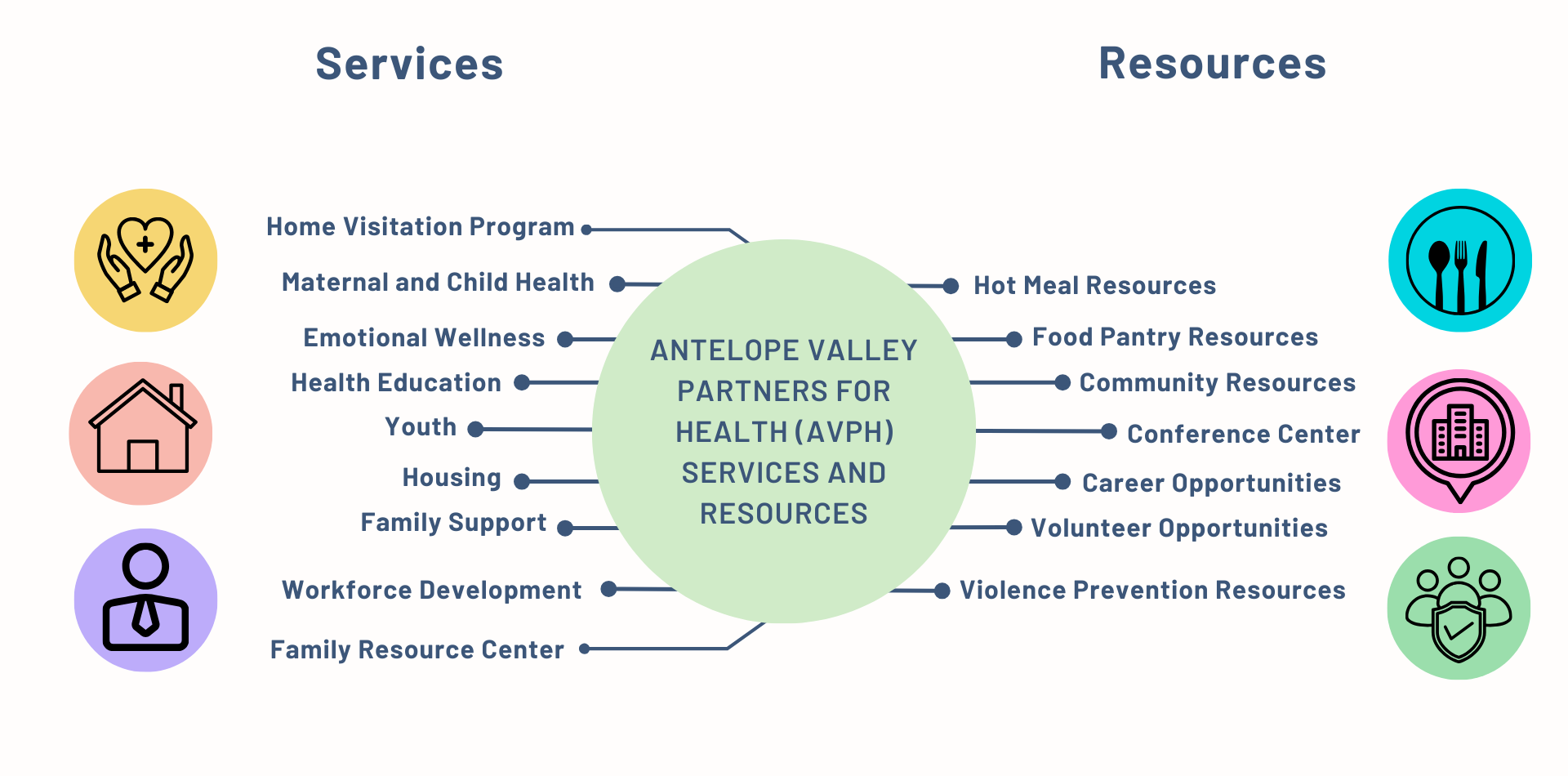
Community and Culture
As a rural region in an urban county, the Antelope Valley is both expansive and culturally diverse. Spanning over 1,350 square miles – about a third of the total county land area – the valley has a larger Black, Hispanic/Latino, Filipino, and American Indian population than the LA County average. Of the Antelope Valley population, 14% of residents identify as Black, 53% of residents identify as Hispanic/Latino/a, and 4% identify as Asian. Nearly half of Asian residents identify as Filipino, approximately double that of the County average. About 41% of residents live in households that speak a language other than English at home, most commonly Spanish or Tagalog.
Antelope Valley’s large Filipino population dates back centuries to the 1898 United States annexation of the Philippines, which deemed Filipinos to be U.S. Nationals and allowed them freedom from restrictive immigration laws. Over the next several decades, many Filipino immigrants migrated to California, seeking career opportunities in agricultural sectors. At the same time, the agricultural economy in the Antelope Valley was booming due to the completion of an aqueduct, making it a desirable destination for recent immigrants seeking employment in that sector.
Antelope Valley is also home to a larger share of American Indian/Native Americans than the Los Angeles County average. As of 2022, approximately 1,500 residents in the region identified as American Indian/Native, a community that can be traced back to the valley’s origins as a trade route for Natives traveling from the Southwestern U.S. to the California Coast.
Antelope Valley Tribes
Antelope Valley Tribes
Antelope Valley Indian Museum
Antelope Valley Indian Museum
Workforce and Education
While still retaining remnants of its agricultural roots, today the Antelope Valley economy is supported by the aerospace and defense industries. Major employers in the region include NASA, Lockheed Martin, Boeing, and Edwards Air Force Base. Twelve percent of jobs in the Antelope Valley are in the Manufacturing sector compared to 7% of jobs countywide. Often, individuals enter the manufacturing sector right out of high school, prioritizing work and immediate earnings opportunities over college enrollment, which is frequently accompanied by student loan debt. As of 2022, about 18% of Antelope Valley residents report having a Bachelor’s degree compared to 35% countywide. Similarly, the share of 18-24-year-olds who are enrolled in school sits 7 percentage points below the Los Angeles County average. This disparity in enrollment was further exacerbated by the pandemic when manufacturing employers boosted wages to address worker shortages.

The combination of choosing work over higher education and holding jobs in well-paying industries may deceptively inflate the Antelope Valley’s median individual earnings of $45,800 as of 2022, approximately 11% higher than the county median. However, the median household income in the Antelope Valley was $79,000 in 2022, about $4,000 less than the LA County average. Earnings come directly from wages from an employer or revenue from selling goods/products and are measured per person. By contrast, household income combines the earnings of every individual in a household and also includes other income streams such as Social Security payments, pensions, child support, public assistance, annuities, money derived from rental properties, interest and dividends. This discrepancy between higher than average wages and lower than average household income could be influenced by the area’s lower labor force participation rate (58% in 2022), implying there may be a higher rate of single income households in the Antelope Valley than other parts of the county. The chart below shows the top industries employing residents in the Antelope Valley in 2022.
The Antelope Valley is also home to a large veteran population – as of 2022, 5.2% of residents reported having served in the U.S. military. Although the share of veterans in Antelope Valley has dropped about 4 percentage points since 2010, it remains well above the LA County average. Veterans represent a vulnerable population, as attempting to reintegrate into civilian life can exacerbate both mental and physical illness leading to frequent job and housing insecurity.
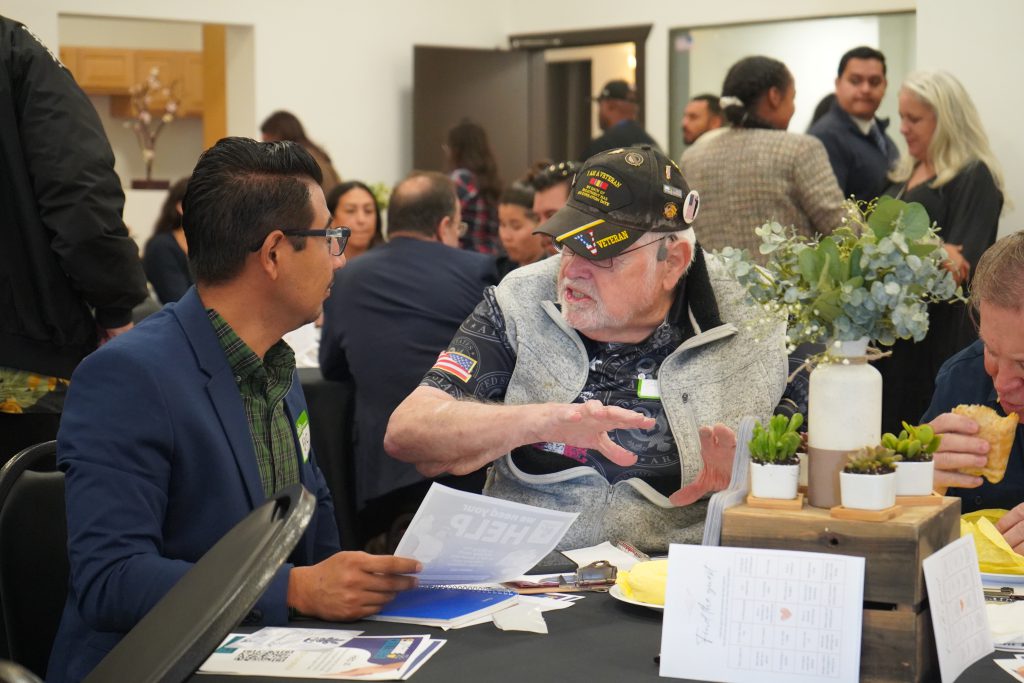
The Greater Los Angeles Homeless Count found that Los Angeles has more homeless veterans than any other place in the United States. Further, veterans are overrepresented in the population experiencing homelessness in the Antelope Valley. The 2022 Homeless Count found that of the 5,000 people experiencing homelessness in the Service Planning Area covering the Antelope Valley, 7% are veterans compared to 5% of people experiencing homelessness countywide.
Food, Transportation and Health
Residents in the Antelope Valley are less encumbered by environmental issues due to lower population density and the distance from the city. However, this also comes at a cost; for example, Antelope Valley residents are much further away from grocery stores than other residents throughout the county. About 26% of residents are classified as having “low access” to grocery stores, meaning the nearest grocery store is over 1 mile away for residents of the denser neighborhoods of Palmdale & Lancaster, and over 10 miles away for residents in the outskirts of the Antelope Valley area. Lack of access to healthy food is directly related to chronic illnesses, and residents of Antelope Valley suffer from higher levels of adult and childhood obesity. When food insecurity saw a steep incline amidst COVID, AVPH mobilized alongside the City of Lancaster for “The Feed the Need” program to provide over 74,000 meals to program participants.
“The Antelope Valley has some of the highest rates of infant mortality, low birth weight babies, preterm births, teen pregnancy and sexually transmitted infections in the United States. In fact, these rates are higher than other parts of Los Angeles County. These trends are highly influenced by both income and educational attainment.”
- Antelope Valley Partners for Health
In addition to food access, Antelope Valley residents also face transportation issues. As of 2020, two-thirds of residents were commuting to jobs outside of the Antelope Valley. About 26% of residents commute one hour or more to work, nearly double the Los Angeles County average. Due to the area’s expanse, public transit use is virtually non-existent, with only 1% of residents using a bus or train to commute to work. Lengthy commute time is known to have negative impacts on both mental and physical wellness. Those with a commute exceeding 60 minutes have an increased risk of depression and anxiety. Moreover, those who spend longer commuting report lower satisfaction with both work and quality of life.
Time spent commuting coupled with minimal access to public parks has negative implications for community health. Despite the expanse of Antelope Valley, access to parks is significantly lower than surrounding communities. Only 12% of residents live within a half mile of a public park in good condition compared to 37% of residents countywide. These effects compound, about 18% of residents report suffering from poor mental health, and 12% report having poor physical health, indicating self-perceived well-being in the community is low.
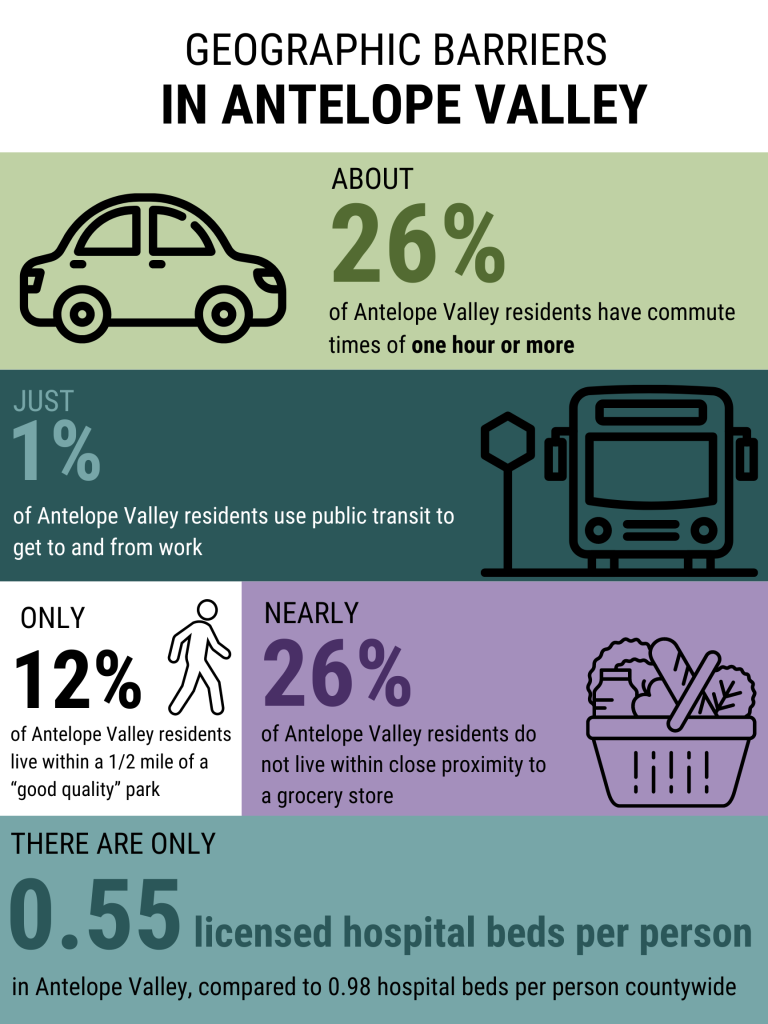
Access to healthcare facilities could be one factor in the higher rates of disease prevalence in the Antelope Valley. According to the CA Health & Human Services Department, the region has just two licensed hospitals (one in Lancaster and one in Palmdale) serving all of its residents. There are just six licensed hospital beds (for both acute and long-term care) per 10 residents in the Antelope Valley compared to the countywide average of 10 beds per 10 people.
Limited access to healthcare facilities makes the preventative work of community organizations like AVPH all the more crucial.
The Antelope Valley's Regional Recovery Hub
Prior to the Regional Recovery Hub, the expanse of Antelope Valley often meant services were being duplicated across communities. With support from the California Community Foundation, AVPH organized a collaborative of local organizations called Healthy People in a Healthy Antelope Valley who are striving to break silos to ensure that efforts are maximized towards a common goal through several key activities.
Leadership Breakfasts
In an effort to foster purposeful connections between organizations across the Antelope Valley, AVPH has hosted leadership brunches, attended by over 80 leaders in the region. These in-person events are widely loved by attendees, who reported making almost 250 new connections across the network. In addition to providing networking and community-building opportunities, the leadership brunches have also increased attendance at other collaborative meetings.
A Central Online Hub
In an effort to streamline communication and access to resources for organizations across the Antelope Valley, AVPH also created a dedicated website for the Health People in a Healthy Antelope Valley collaborative. The website includes a community event calendar, a directory of collaborative members and contact information, a form to apply for office supplies, and a central location for mini-grant applications.
Mini Grants
To help support under-resourced organizations in the region, the collaborative provided “mini grants” up to $10,000 to sponsor events and projects, build organizational capacity, or allow organization leaders to attend roundtables and receive mentoring. The collaborative was able to provide 13 grants to organizations and leaders in the community, some of whom are described below:
Billionaire Leadership Club (a project of Street Company)
Street Company, located in Lancaster, hires people experiencing homelessness through their barista training program. With the help of a mini grant, Billionaire Leadership Club has been able to provide financial literacy training to each cohort of baristas with a focus on budgeting and saving for housing.
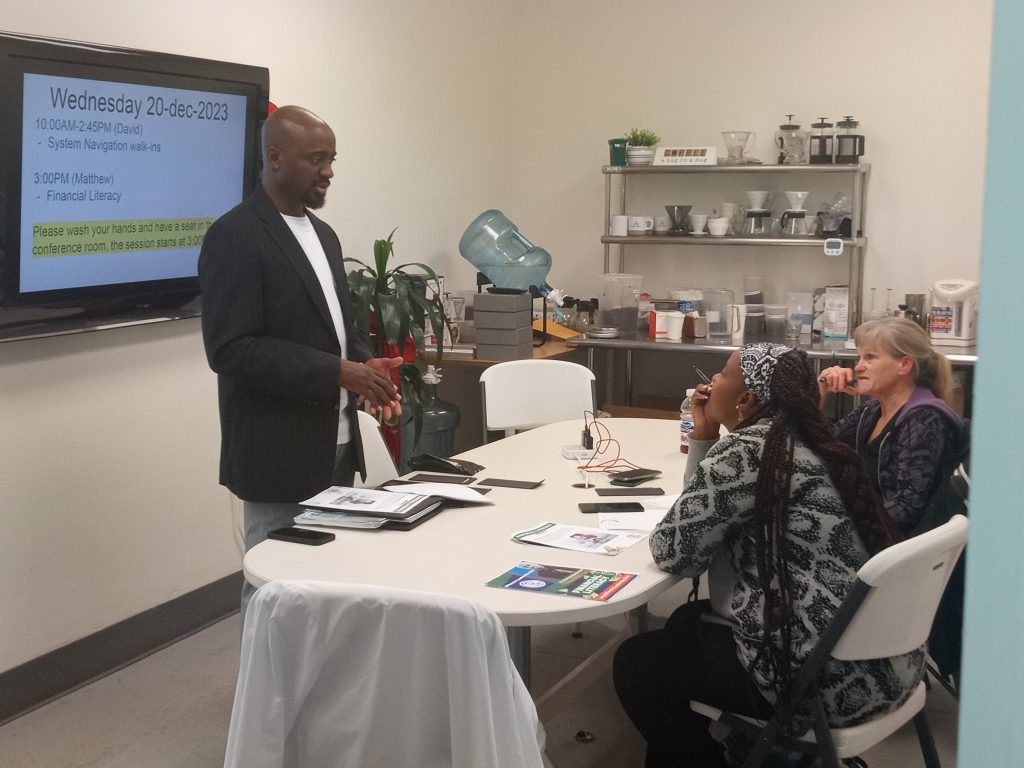
Built to Build Studio, LLC
Built to Build Studio has provided 8 months of free entrepreneurial training to 50 women in the Antelope Valley with the goal of training women on monetizing their ideas for the advancement of their families.
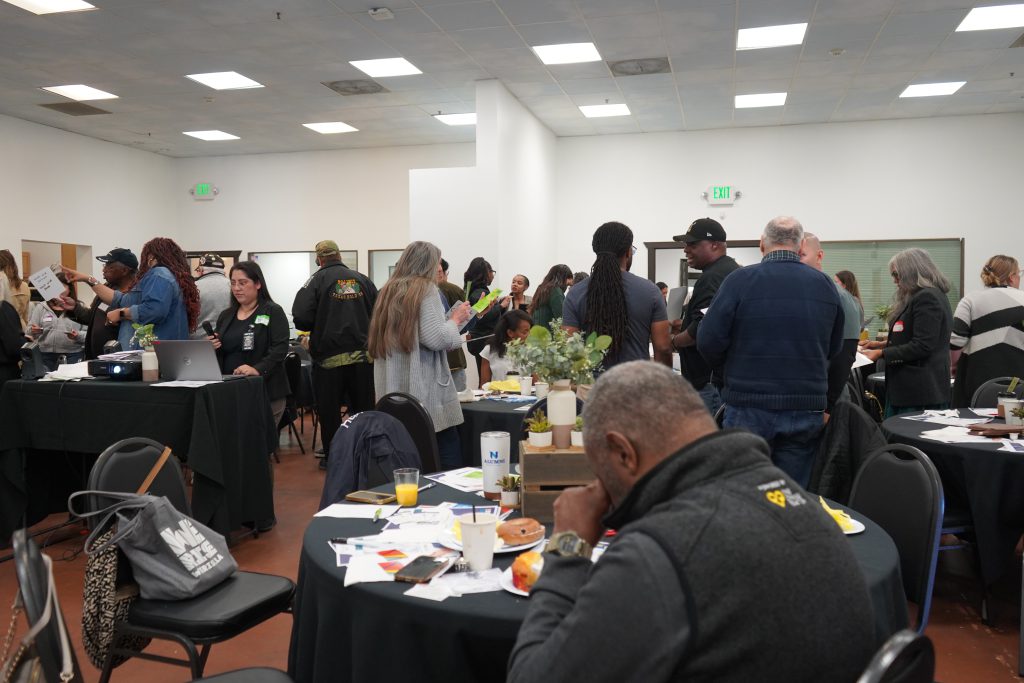
El Lirio’s Pantry (a project of Iglesia El Lirio de Los Valles)
Through a mini grant, El Lirio’s Pantry aims to provide a healthy and stable life for older adults in the Antelope Valley by delivering nutritional food boxes. The organization is working with various retirement communities to set up a food delivery infrastructure. As of spring 2024, they have agreements in place with four housing complexes with over 120 seniors registered.
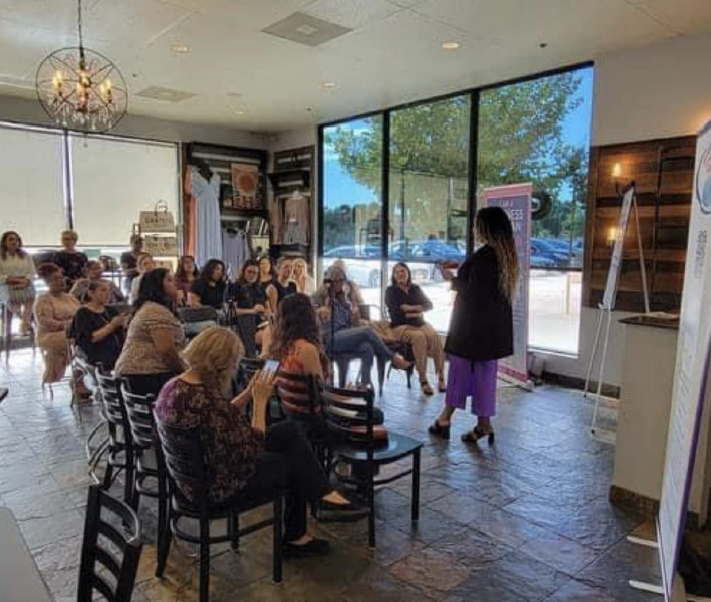
Empower Them Collective
The Empower Them Collective hosts a Policy & Leadership Academy that prepares community members in the Antelope Valley to engage with local leaders to advocate for community-driven policies that promote health and wellness.
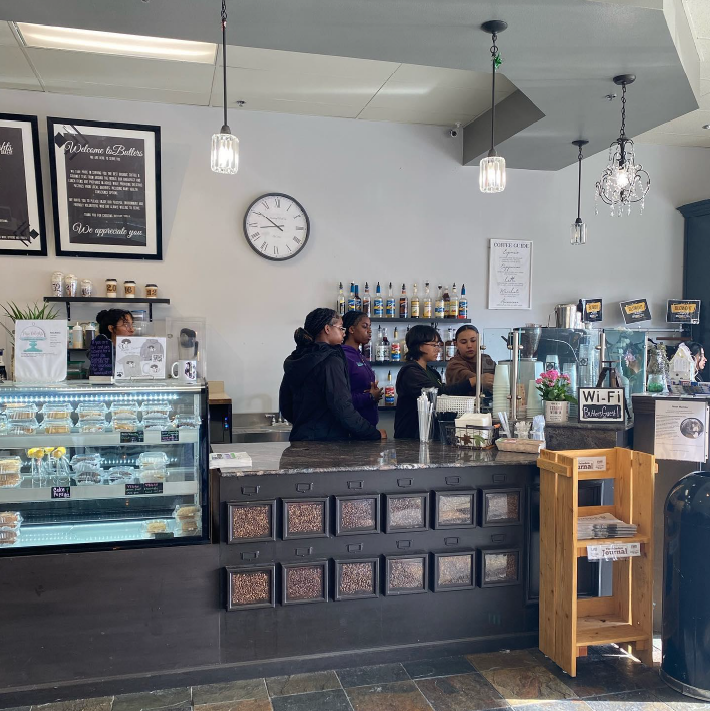
Generations Coffee
Generations Coffee engages local youth and young adults in a 100-hour work readiness program that helps prepare them to successfully enter the workforce. Through the support of a mini grant, the organization aims to graduate 60 baristas this year.

Emily Phillips
Emily (she/her) is the Project Specialist at Neighborhood Data for Social Change. Emily received her Master in Public Policy with a specialization in advocacy communications from the USC Price School in the Spring of 2024. Prior to relocating to Southern California, Emily grew up in Phoenix and then obtained her BA in Political Science and Global Studies from Loyola University Chicago. Her main focus incudes policy advocacy across a variety of policy areas including housing, health, and racial justice. She is passionate about community engagement and social impact.
Sources
A food pantry that gives hope in the Antelope Valley. Los Angeles Regional Food Bank. (2023, October 24). https://www.lafoodbank.org/stories/a-food-pantry-that-gives-hope-in-the-antelope-valley/
Antelope Valley Community History. LA County Library. (n.d.). https://lacountylibrary.org/antelope-valley-local-history/
Billionaire Leadership Club. (n.d.). https://billionaireleadership.club/
Burke, M., Willis, D. J., & Truong, D. (2022, November 18). California community college enrollment plummets to 30-year low. Los Angeles Times. https://www.latimes.com/california/story/2022-11-18/california-community-college-enrollment-plunges
California State Parks. (n.d.). Antelope Valley Indian Museum. http://www.avim.parks.ca.gov/
Carroll, M. (2024, February 16). VetConnect helps unhoused veterans receive services they need during annual homeless count. USC Suzanne Dworak-Peck School of Social Work. https://dworakpeck.usc.edu/news/vetconnect-helps-unhoused-veterans-receive-services-they-need-during-annual-homeless-count#:~:text=Los%20Angeles%20has%20more%20veterans,total%20national%20population%20of%20veterans.
Daily News. (2017, August 29). Thousands turn out for poppy festival. Daily News. https://www.dailynews.com/2008/04/20/thousands-turn-out-for-poppy-festival/
Empower Them Collective . (2024, June 27). https://theempowerthemco.org/
Gascon, C. S. (2022, July 27). Labor constraints remain greatest challenge for Resurgent Manufacturing Sector. Labor Constraints Remain Greatest Challenge for Resurgent Manufacturing Sector. https://www.stlouisfed.org/publications/regional-economist/2022/jul/labor-constraints-challenge-resurgent-manufacturing-sector
Generations coffee. Facebook. (n.d.). https://www.facebook.com/generationscoffeeav/
Han, L., Peng, C., & Xu, Z. (2022, December 29). The effect of commuting time on quality of life: Evidence from China. International journal of environmental research and public health. https://www.ncbi.nlm.nih.gov/pmc/articles/PMC9819363/
Healthy people in a healthy Antelope Valley. HealthyPeopleAV. (2024, April 11). https://healthypeopleav.org/
LAHSA. (2022). Lahsa releases 2022 Greater Los Angeles Homeless Count Results. Los Angeles County Homeless Services Authority. https://www.lahsa.org/news?article=895-lahsa-releases-2022-great-los-angeles-homeless-count-results-released
Morin, R. (2011, December 8). The difficult transition from military to civilian life. Pew Research Center. https://www.pewresearch.org/social-trends/2011/12/08/the-difficult-transition-from-military-to-civilian-life/
Seligman, H. K., Laraia, B. A., & Kushel, M. B. (2010, February). Food insecurity is associated with chronic disease among low-income NHANES participants. The Journal of nutrition. https://www.ncbi.nlm.nih.gov/pmc/articles/PMC2806885/
Smithsonian Institution. (2022, October 4). Undiscovering the hidden histories of California’s Filipino community. Smithsonian. https://www.smithsonianmag.com/blogs/smithsonian-education/2022/10/04/undiscovering-the-hidden-histories-of-californias-filipino-community/
Infographics
All infographics were created by Dan Hoornbeek, MPA.

